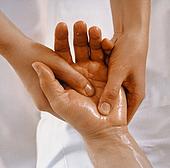As people seek individuality in everything in the modern world, healthcare is adapting. Personalized medical equipment is no longer just about necessity, but it’s becoming an extension of personal identity. By offering a better fit, improved function, and greater comfort, customized medical tools give users more control over their care and quality of life. This article explores why customization is important and provides strategies for personalizing your medical supplies and equipment.
Why is Personalization Important in Healthcare?
Enhances Emotional Well-being
Medical tools with custom designs incorporating color schemes or favorite motifs help patients overcome anxieties. This is especially important for children and patients in long-term care settings. The designs shift from sterile medical instruments to comforting objects that connect emotionally with users. Additionally, patient engagement improves when devices incorporate personal preferences, resulting in an enhanced healthcare experience. You can personalize medical supplies and equipment in favorite colors and patterns or even use a sports team logo to bring a little cheer to a medical setting.
Maximizes User Comfort
Personalized features help equipment match user needs, leading to greater comfort and ease of use. These aspects enable patients to develop better control over their health while retaining independent capabilities to handle everyday tasks. The adaptive design increases comfort, especially during prolonged use.
Bridging Aesthetics and Clinical Requirements
The recent advances in customization technology enable healthcare professionals to maintain operational integrity and set healthcare standards. Aesthetic components benefit from water-resistant finishes, antimicrobial protection, and design precision elements, which make them durable and safe for use. The integration between functionality and visual design within healthcare devices leads to enhanced patient-oriented care, which results in improved health outcomes.
4 Ways to Personalize Your Medical Supplies and Equipment
Water Transfer Printing
Also known as hydro dipping, this advanced surface finishing method transfers intricate patterns onto 3D surfaces. A water-soluble film enables a perfect bonding surface that results in vibrant and durable finishes. The method enables finishing for plastic, metal components, and ceramic materials.
Water transfer printing offers efficiency, versatility, environmental friendliness, and longevity, making it ideal for healthcare. This technique also creates smooth, bubble-free surfaces that preserve the functionality of the equipment while allowing for full design customization.
Airbrushing
Airbrushing transforms pediatric medical equipment by adding personalized designs. This method enables the creation of personalized aesthetic designs using favorite characters or fantasy themes. It can be applied to braces, walkers and prosthetic devices, and equipment.
Airbrushed pediatric medical devices use nontoxic acrylic paints and medical-grade sealants to create durable designs that meet all necessary safety requirements. The fast drying time lets artists achieve smooth transitions between colors as well as expert-level finishing effects. For best outcomes, it is important to test designs on removable covers first and always prioritize non-toxic materials to ensure the child’s comfort and safety.
Decals
Decals enable customization capabilities for medical equipment such as insulin pumps, walkers, and pill organizers. The procedure implements water-slide methods that operate on ceramic and metallic materials. On the other hand, vinyl decals, applied with masking sheets, offer a smooth, professional look without air bubbles. This is ideal for plastic surfaces like insulin pumps or pill boxes. Additionally, the adhesive layer in these products maintains a thin profile, which enables flawless attachment to surfaces and retains durability.
This method’s design capabilities enable intricate patterns, educational diagrams, or playful themes that do not impact device operation. It can also withstand everyday use better than standard stickers.
Additive Manufacturing
This method leverages 3D printing technologies to make medical equipment that matches patient specifications. The technology allows the creation of intricate, patient-centric designs that traditional manufacturing methods struggle to produce. It supports lightweight lattice frameworks, customized implants, and surgical instruments. The economic advantages of 3D printing technology include smaller workplace waste and reduced manufacturing costs for small-scale output.
Daily medical equipment use doesn’t require sacrificing personal identity. Customized supplies can help restore individuality and improve health control. By integrating patient preferences with clinical needs, these personalized solutions foster dignity and confidence in healthcare experiences while maintaining necessary medical standards. This also enhances emotional well-being, encourages better compliance and engagement in treatment plans.




